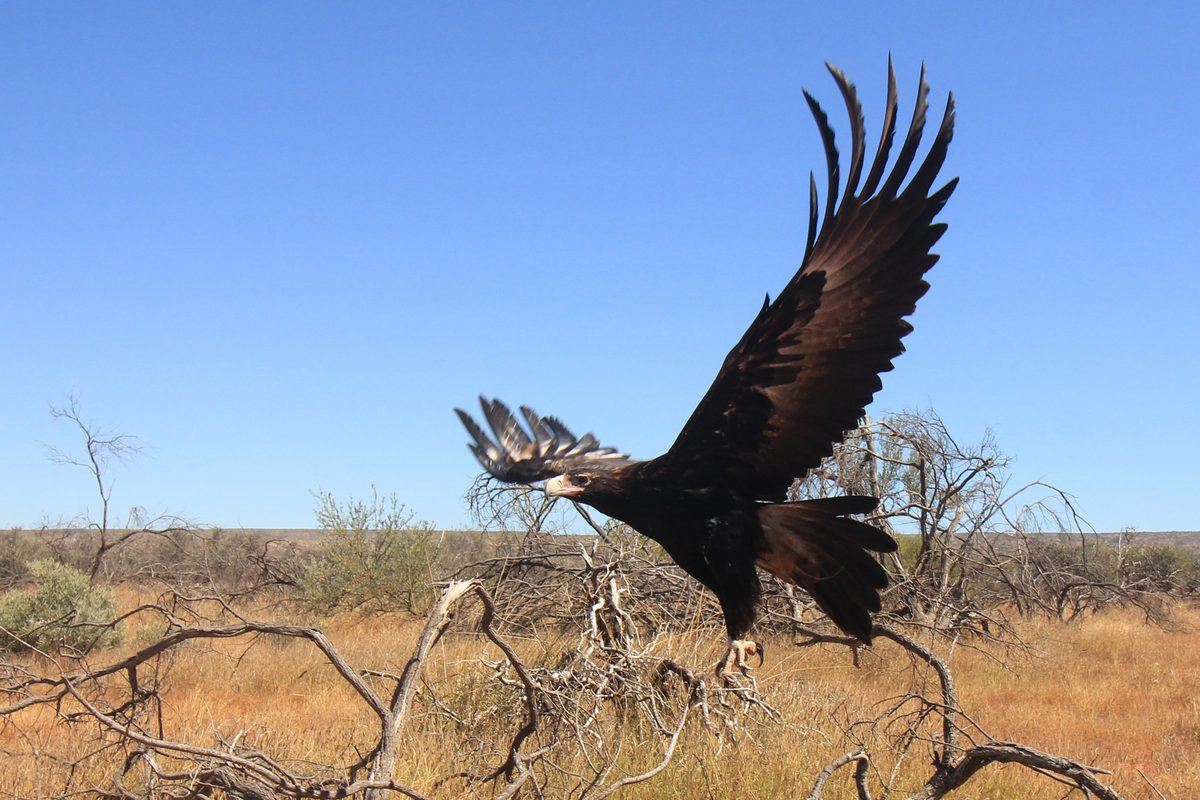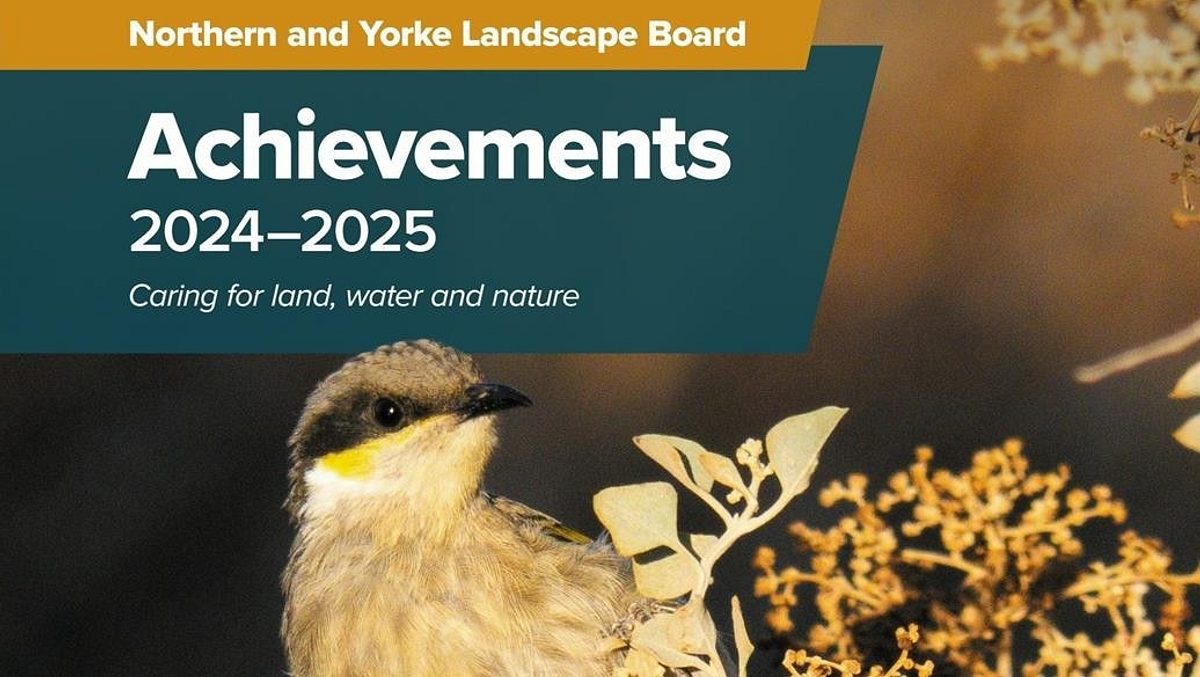Solar-powered trackers set record straight about wedge-tailed eagles
Solar-powered satellite devices tracking Australia’s largest bird of prey, the protected wedge-tailed eagle (Aquila audax), have revealed its crucial role as nature’s pest controller.
South Australian raptor expert Ian Falkenberg, with funding support from the Northern and Yorke Landscape Board, has fitted the devices to juvenile eagles to better understand their foraging patterns and causes of death.
“Wedge-tailed eagles provide an important role for pest management on farms,” said Mr Falkenberg. “They prey mostly on feral animals, particularly the rabbit, which is its main prey.
“The tracking data really gives us an insight into the day-to-day life of the eagles. At a fine scale level, we can zoom in on the aerial photography to pinpoint whether the bird is in a paddock cleaning up carrion or in rugged country hunting rabbits.”

An iconic Australian bird, the wedge-tailed eagle is often unfairly blamed for lamb deaths. In fact, this false belief led to a bounty system in the 1960s with tens of thousands of eagles slaughtered annually. The practice stopped with the knowledge of the birds’ function as a scavenger, cleaning up sick, dying and dead animals in the landscape.
“Studies have shown that wedge-tailed eagles are often the secondary cause of lamb deaths and a very small percentage, less than 1%, are killed by eagles,” said Mr Falkenberg. “Research has found similar lamb mortalities on other continents across the globe. The bottom line is that eagles scarcely have any adverse or economic impact on the sheep industry.”

The Nicholls, a Mid North farming family, value the role that the wedge-tailed eagle pair on their property play in their sheep operation.
“We recognise that eagles are part of the natural cycle of life on our farm,” said Farm Manager Sid Nicholls. “The numbers of lambs that we’d lose to eagles each year is inconsequential compared to what you’d lose to mismanagement and poor nutrition within your property. There’s a lot more gain to be had in doing those things right on your farm, looking after your sheep right…rather than worrying about a pair of eagles flying around.”
Research has revealed that the leading causes of lamb deaths are mismothering, lack of bonding between lamb and ewe, exposure to cold, wet weather and illness due to poor stock condition.

As the lambing season draws closer, farmers can reduce the risk of problems with predators in several ways, including:
- 1. A coordinated fox management program prior to lambing that continues well into the lambing season.
- Removing offal, afterbirth or carcasses from sheep yards for destruction or dumping some distance away. Leaving some disease-free carcasses in paddocks can provide an alternative food source for young scavenging eagles.
- Providing shelter for the lambing flock close to the house or in a paddock of trees can minimise lamb loss from exposure.
- Thinking about mob composition (lambing down maiden ewes with older ewes), checking stocking rates, and minimising handling during lambing to prevent the risk of starvation (mismothering).
View a fact sheet about living with wedge-tailed eagles in an agricultural setting.


